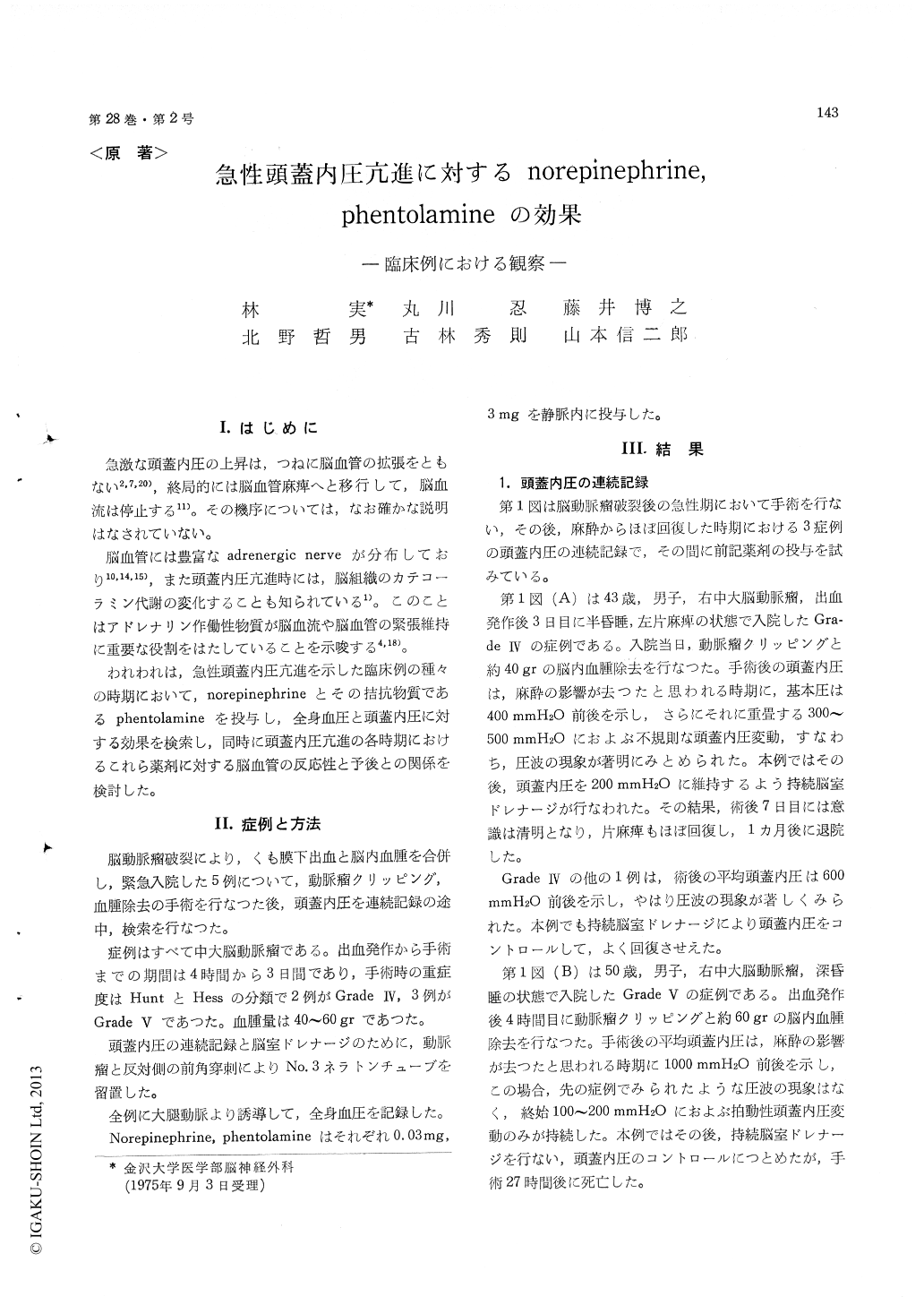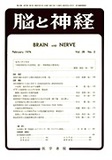Japanese
English
- 有料閲覧
- Abstract 文献概要
- 1ページ目 Look Inside
I.はじめに
急激な頭蓋内圧の上昇は,つねに脳血管の拡張をともない2,7,20),終局的には脳血管麻痺へと移行して,脳血流は停止する11)。その機序については,なお確かな説明はなされていない。
脳血管には豊富なadrenergic nerveが分布しており10,14,15),また頭蓋内圧亢進時には,脳組織のカテコーラミン代謝の変化することも知られている1)。このことはアドレナリン作働性物質が脳血流や脳血管の緊張維持に重要な役割をはたしていることを示唆する4,18)。
It is accepted that cerebrovascular dilatation isa constant response during the advanced stage ofintracranial hypertension. Severe intracranial hy-pertension ultimately associates with profund vaso-dilatation and reduces cerebral blood flow to zero.This irreversible state is called cerebral vasomotorparalysis by Langfitt et al (1965). The richadrenergic nerve supply of the cerebral vesselssuggests that ptessor amines possibly affect thecerebral circulation and the cerebral vascular tone.This study is to investigate the reactivity ofnorepinephrine and phentolamine on intracranialpressure (ICP) in patients with severe intracranialhypertension.
The ICP and systemic blood pressure (SBP) mo-nitorings were carried out continuously after theevacuation of intracerebral hematomas due to rup-tured intracranial aneurysms. Severe intracranialhypertension due to brain swelling was observedin these patients.
Three stages were defined according to the re-activity to norepinephrine and phentolamine on theICP. In Stage I, norepinephrine caused a transientdecrease in the ICP and phentolamine caused amarked rise in the ICP. Stage II was marked by theabsence of the ICP response to norepinephrineand phentolamine. During Stage III, the ICPchanged synchronously with a variation of the SBPafter the administration of norepinephrine andphentolamine.
In Stage I patients, the mean ICP level wasbetween 500-1000 mmH2O. Tracing of the ICP inthis group showed transient rises called pressurewaves and the waves were recurring increases inthe ICP to value of 300-500 mmH2O superimposedon an elevated level of the ICP. On the otherhand, in Stage II and III patients, the ICP levelexceeded 1000 mmH2O. Tracing of the ICP inthese groups showed only variations by the arterialpulses.
The patients in Stage I had a well prognosis forlife if proper treatments such as continuous ven-tricular drainage were carried out. The patientsin Stage II and III had a poor prognosis for lifeinspite of continuous ventricular drainage.
There are varying stages in cerebrovascular dil-atation accompanying intracranial hypertension.We have no information on the mechanism of thiscerebrovascular dilatation at present. However, wespeculate that the pressor amines such as norepine-phrine may partly participate in the mechanismresponsible for the vasodilation. So, we attemptto grade the degree of this vasodilatation accordingto the reactivity of norepinephrine and phentolamineon the ICP. It is presumed that cerebrovasculardilatation is slight and reversible in Stage I patients,whereas cerebrovascular dilatation is profund andirreversible in Stage II and III patients.
Continuous ICP recording and examination of thereactivity to norepinephrine and phentolamine onthe ICP are valuable when considering the prognosisfor life in patients with severe intracranial hyper-tension.

Copyright © 1976, Igaku-Shoin Ltd. All rights reserved.


